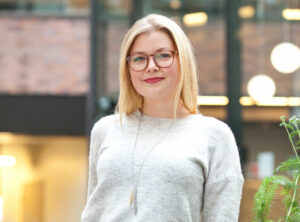On the airplane or train
Hopping on an airplane and sitting in close proximity to others may make travellers nervous, but Air Canada is implementing measures to help limit the spread of the virus.
For example, the Air Canada CleanCare+ program highlights the implementation of high-efficiency particulate air filters on every aircraft that ensures complete changes of air every two to three minutes. Modern aircrafts are engineered to constantly scrub and refresh air 20 to 30 times per hour, which is significantly more than the five to 10 air exchanges per hour seen in a typical office.
“This is a key reason why there has been no reports of sustained disease outbreak clusters onboard flights,” says Pascale Déry, Air Canada’s director of media relations.
The airline has also been at the forefront of mitigation strategies. Air Canada was the first in both North and South America requiring passengers to get temperature checks before bording, the first airline to make masks mandatory for employees in North America and the first Canadian airline to begin to explore rapid COVID-19 testing in an aviation environment with Spartan Bioscience, an Ottawa-based biotechnology leader.
While onboard, all passengers and crew must wear masks throughout the duration of the flight, and every passenger can expect to receive a care kit that contains sanitizing wipes, gloves, a mask and a bottle of water.
Read our assistant editor’s retelling of her journey back to Canada from the U.K.
On July 15, Air Canada’s chief medical officer Jim Chung issued a letter calling on the federal government to ease quarantine restrictions that were unchanged since March. He is proposing science-based alternatives with the aim of striking a better balance for travellers, public health and the Canadian economy.
“Canadians have sacrificed a lot. As a country, we have managed to flatten the curve to the point where we have manageable and relatively low community transmission levels,” says Chung. “We are at a point where we can certainly start looking at opening up border restrictions.”
Given the challenges in the United States in controlling the virus, Chung says he is not proposing relaxing border restrictions with our southern neighbours. Instead, he explains that we can look into implementing safe travel corridors with countries in Europe that have comparable counts and public health infrastructure to Canada, such as Germany and Belgium.
By doing so, those countries can still manage their cases and trace them effectively. The risk is low enough that Canada should consider having a discussion about exempting travellers from low-risk countries from the Quarantine Act, he adds.
“We don’t have to reinvent the wheel, we can sort of learn off other countries what their best practices are and what works,” he says, pointing to how some countries in Europe, such as the United Kingdom, started introducing travel corridor exemptions that do not require travellers to self-isolate upon arrival.
Chung adds they would also consider requiring passengers to each present a negative COVID-19 test prior to boarding an airplane. This requirement could help reduce quarantine restrictions to a more “manageable” level as opposed to the current 14-days.
As the tourism and hospitality sector in Canada employs 1.8 million Canadians and contributes $102 billion to the Canadian economy, Chung says it is important to start lifting measures. By doing so, he says it not only poses very little risk but also helps support our economy.
Airline business models during COVID-19 “fundamentally unsafe,” according to an expert
There have been concerns expressed about decisions made by airlines. As Air Canada and WestJet both opened up their middle seats on their aircrafts as of July 1, some experts are worried crowded cabins can be dangerous amid the pandemic.
“Travel is a really risky thing to do during this pandemic,” says Colin Furness, an infection control epidemiologist and assistant professor at the University of Toronto. “The safest place you can be is in your home. By travelling, you risk a lot of contact with a lot of strangers with no place to hide.”
For someone who has to travel on a plane because of an emergency, Furness says they can take steps to limit the amount of exposure to others. This includes picking the emptiest plane or the first flight of the day where the aircraft has been sitting overnight.
“I have never in my life flown business class, but in this situation I would. You have more space and aren’t crammed in like sardines,” he says. But still, Furness says he strongly opposes air travel during the pandemic.
“I want to be clear how unsafe I think the situation is. It’s not just sharing air in proximity to someone. What perturbs me is that airlines have started selling the middle seat, which means they want full airplanes,” he says.
He explains that Air Canada and WestJet are both pointing to a report by International Air Transport Association (IATA), a trade association of the world’s airlines, to guide their decision. In the report, the IATA says it thinks re-introducing the middle seat is a great idea, though Furness points out there isn’t any data indicating how safe the measure is.
“[The IATA] is just basically saying airplanes are safe because they think they’re safe, and Air Canada and WestJet are using that as their authority as opposed to public health or experts,” he says. “I’m dismayed that Transport Canada has not stepped in.”
If it’s up to him, Furness says he would change the business model that includes imposing a fee on the window seat and aisle seat that pays for the middle seat. In other words, Furness says all airplanes have to do is raise ticket prices instead of cramming lots of people into a small space.
“Their business model is fundamentally unsafe, and I believe because of their actions they are untrustworthy,” he says. He adds that when airlines say they do “deep cleans” of their aircrafts, it doesn’t mean anything.
Terminal cleaning, on the other hand, is an intense disinfecting procedure that involves removing every detachable item in the room for disinfection. In hospitals, this involves bleach, disinfectants and ultraviolet light devices that scrub the air. In airports, measures may not be as stringent.
“The airlines are not acting responsibly, so that makes me really concerned,” he says, adding that there have been many recent domestic and international flights with confirmed COVID-19 cases. “We’re used to trusting airlines, and that’s the thing that really bothers me. Airlines have it wrong right now. If it were up to me, Canadians would not be heading out on tourism flights until we have a vaccine.”










